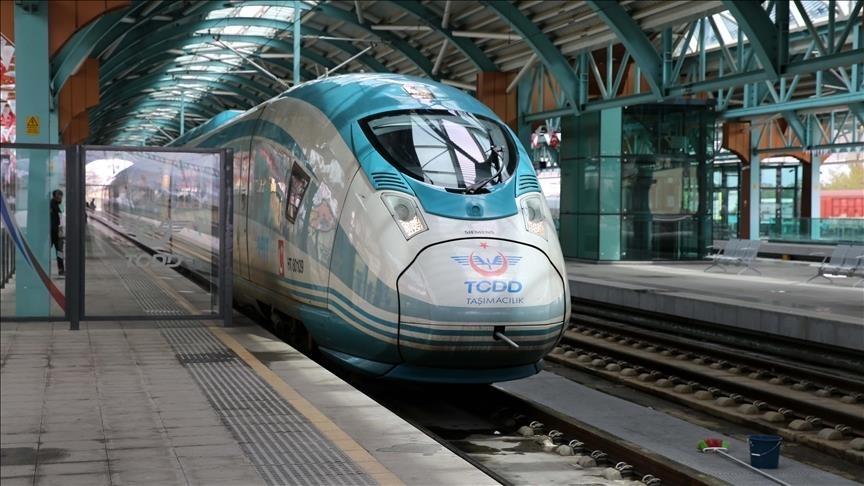On 100th anniversary, high-speed train networks criss-cross Republic of Türkiye
Railway network in Türkiye now boasts a length of around 14,000 km

ANKARA
While the history of the Turkish railway network began in 1856, in the Ottoman era, when a British firm laid down the 130 kilometers (86 miles) of tracks between the Aegean cities of Izmir and Aydin, the country now boasts around 14,000 kms (8,700 mi) of railways.
From 1956 to 1922, a total of 8,619 km (5,355 mi) of railway lines, including the Rumelia and Anatolia-Baghdad lines, were built in Ottoman territory.
In the Republican era, railway lines were structured in line with national interests, and governments focused on railway projects until 1950.
In order to ensure the spread of economic development throughout the country, it aimed to reach underdeveloped regions.
Towards this end, Kayseri was connected to the railway network in 1927, as were Sivas in 1930, Malatya in 1931, Nigde in 1933, Elazig in 1934, Diyarbakir in 1935, and Erzurum in 1939.
In addition, the governments gave importance to the construction of extension lines, which connected the main lines to each other and played an important role in the expansion of the railroad throughout the country.
In this context, 3,780 km (2,350 mi) of railway network was added to the 3,714 km (2,300 mi) of railway inherited from the pre-Republican era in the period 1923-1950, and the total line length reached 7,671 km (4,766 mi).
From 1950 to 2002, as priority was given to highway investments, the railway network, which was 7,671 km (4,766 mi) in 1950, only grew to 10,940 km (6,800 mi) until 2002.
Post-2002 era
The expansion of railway networks gained momentum again after 2002; in 2023, the railway network reached 13,919 km (8,650 mi).
Türkiye is also expanding its high-speed railway lines.
In the country, which thanks to its strategic location serves as a bridge between East and West, 2,251 km (1,400 mi) of high-speed railway lines have been built since 2002.
In the metropolis of Istanbul, the continents of Asia and Europe were connected with an uninterrupted railway line thanks to the Bosphorus Rail Tube Crossing.
The modernization of the Gebze-Halkali Suburban Line enabled uninterrupted urban suburban transportation between Asia and Europe.
High-speed trains operated on the Ankara-Istanbul, Ankara-Konya, Ankara-Eskisehir, Konya-Istanbul, Ankara-Karaman, Istanbul-Karaman, Eskisehir-Istanbul and most recently Ankara-Sivas lines, which went live this April, also significantly shortening travel time to many cities with regional trains or combined transportation with buses.
High-speed railways serve an average of 40,000 people.
Hundreds of important investments were made in the construction of the Baku-Tbilisi-Kars Railway Line into neighboring Azerbaijan and Georgia, renovation and modernization of the existing system of 11,668 km (7,250 mi), liberalization of railway transportation, and development of national and domestic railway industry.
As a result of these investments, high-speed trains directly reached 11 cities with the construction of high-speed railway lines.
Regional trains
Conventional main line and regional trains, which serve an average of 44,000 passengers each day, provide economical and comfortable travel to the four corners of the country and make significant contributions to domestic tourism.
The interests of travelers and photography enthusiasts in trains operate on various routes.
Main line trains are operated on 16 routes across the country.
Domestic train efforts
Under the Turkish Railway Vehicles Industry (Turasas), efforts to develop the indigenous railway industry have begun.
There are plans for Turasas to supply 95 electric mainline locomotives and 20 diesel electric mainline locomotives.
Two locally and indigenously produced electric passenger train sets have been in service on the Adapazari-Gebze track since this May.
*Writing by Gokhan Ergocun from Istanbul








